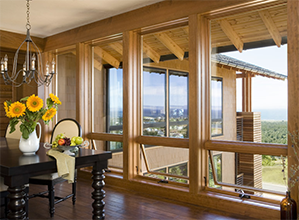A vinyl window can be inexpensive, durable and remarkably energy efficient when designed properly to minimize thermal transfer. While early vinyl windows had problems with thermal expansion (the vinyl sash would expand or contract at a different rate from the glass and cause leaks) and stability in very hot environments, modern vinyl windows are much more durable and dimensionally stable. Look for vinyl window frames with heat-welded joints — they’re stiffer than mechanically joined vinyl frames and thus provide better resistance to temperature stresses. Interior webs also strengthen the frame and improve its thermal performance.

Vinyl windows are made primarily from polyvinyl chloride (PVC). This material has many advantages, including being virtually maintenance-free. It can’t be painted, but is often available in white and various neutral colors that complement many house colors. Because the color goes all the way through the material, scratches and dings are nearly impossible to see. Consequently, a vinyl window or patio door can look nearly new for years.
There will be differences in the quality of one manufacturer’s vinyl compared to another. This is because a vinyl window frame is made from a compound—a recipe of sorts—that dictates its performance over time. Each additive to a company’s vinyl recipe helps determine the long-term characteristics of the final product, like its weather and impact resistance. For example, Titanium Dioxide makes the vinyl more heat resistant. At first glance, competing windows may look the same, but there can be key differences in the vinyl recipe used and how vinyl parts are formed to make a window structurally strong and optimize insulation performance.
Vinyl Window and Door Frame Benefits
- Exceptionally energy efficient
- Extremely durable
- Non-corroding
- Virtually maintenance-free
- Available in a wide range of styles and shapes
- Cost effective
- Easy to install

